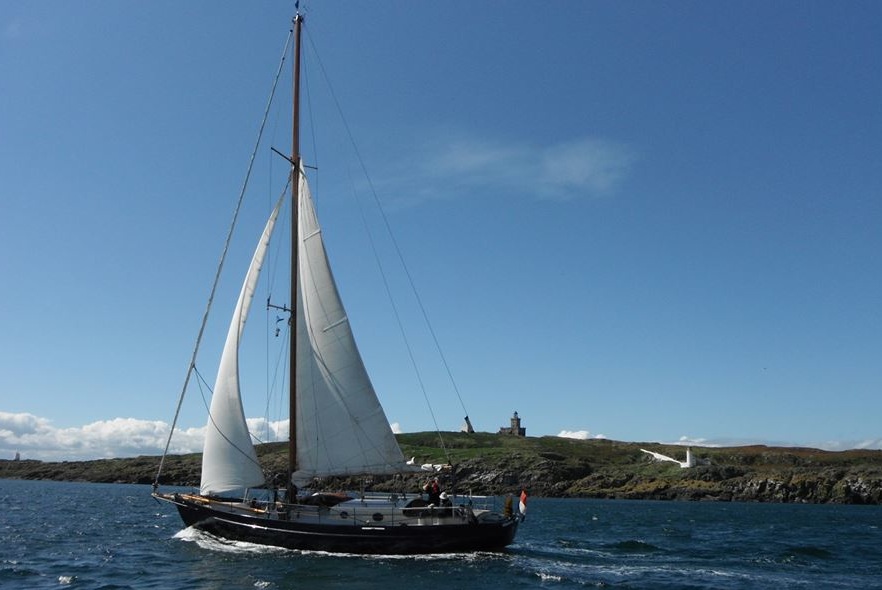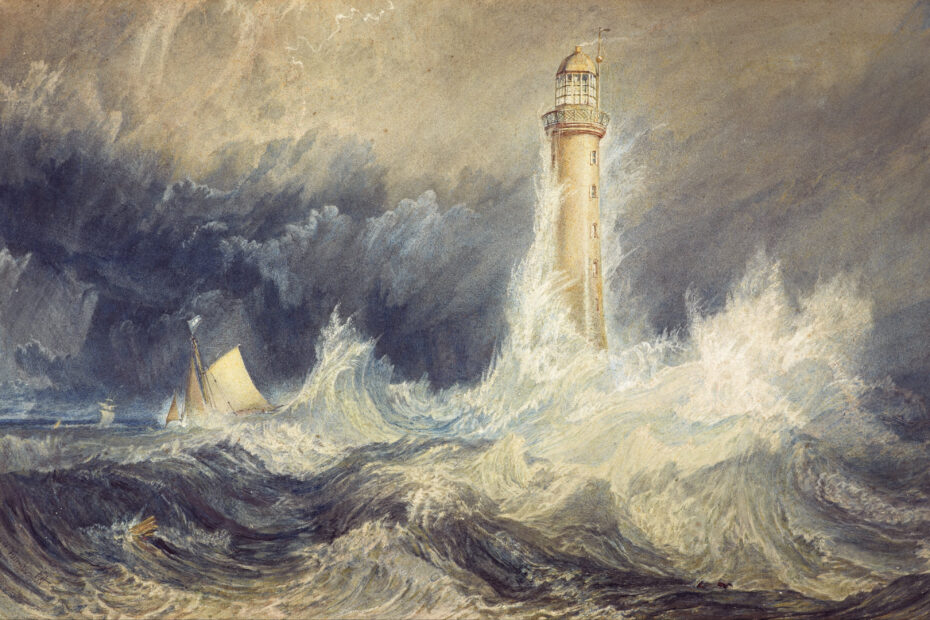On passage south from Aberdeen, Scotland, there’s two infamous rocky hazards off the Firths of Tay and Forth. Before the days of modern seamarks and navigation aids, the notorious Bell Rock and Isle of May claimed numerous lives as ships foundered on the treacherous rocks. In this extract, Claudia Myatt reflects on her passage south in ‘Witch’, during the OGA50 Round Britain Challenge, 2013.
Bell Rock
At sunset on Monday, 1 July, ‘Witch’ was heading south across the wide mouth of the Firth of Forth, on passage from Peterhead to Eyemouth. Sunset is late in these waters; by about 9.30 the sun was dropping behind the silhouette of Bell Rock lighthouse, close on our starboard beam. The sea was liquid gold to the west, steely grey to the east and the wind a light and fickle southwesterly, so we were motorsailing to keep the miles covered. The plan was to make it to Eyemouth in time to dry out on the slipway and repair the damage to the propeller after our argument with a pot line. Bell Rock is one of the most famous of the Stevenson lighthouses; an extraordinary feat of engineering on a jagged half tide rock that lies eleven miles south of Arbroath. Formerly called the Inchape Rock, it was the subject of a ballad:
‘The waves rush in on every side;
Robert Southey, 1815
But the ship sinks fast beneathe the tide
For even in his dying fear
The dreadful sound could the Rover hear
A sound as if with the Inchcape Bell
The devil below was ringing his knell.’
The position of the rock, in the fairway of vessels crossing the Firths of Tay and Forth was having a devastating effect on shipping and the economy of the area. At the beginning of the 19th century, the rock was taking an average of six ships every winter, but its notoriety had been growing for centuries. In the 14th century a concerned local Abbot managed to place a bell on the rock to help warn sailors of its peril, but not everyone was pleased. A Dutch pirate, who relied on wrecks for his income, managed to vandalise the bell, but a year later he was himself wrecked – on the Inchcape Rock! The story of Stevenson’s ingenuity and tenacity in building a lighthouse on this jagged wildernessin 1811 is well documented, along with all the other lights built by this family of engineers. The only black sheep of the Stevenson dynasty was, of course, Robert Louis, who managed to wriggle out of the family business and acquire his own far more reaching fame. But he understood the importance of their work: “Whenever I smell salt water, I know that I am not far from one of the works of my ancestors”.

For more information on the Scottish lighthouses I recommend Bella Bathurst’s book ‘The Lighthouse Stevensons’. I’ve been reading this as we sail and appreciate the landmarks all the more for knowing a bit about their history.
Isle of May
Further south, in the mouth of the Firth of Forth, there’s Scotland’s first lighthouse, originally built in 1636, and known as ‘The Beacon’, to warn mariners of the treacherous rocks at the mouth of the Firth of Forth. In 1816, Stevenson turned his attention to the Isle of May and built Main Light. Fully automated in 1989, the lighthouse-keepers’ cottages are now home to researchers and staff of Scotland’s National Nature Reserve, while huge colonies of seabirds nest on the rocks in summer with grey seals breeding in autumn.

You must be logged in to post a comment.